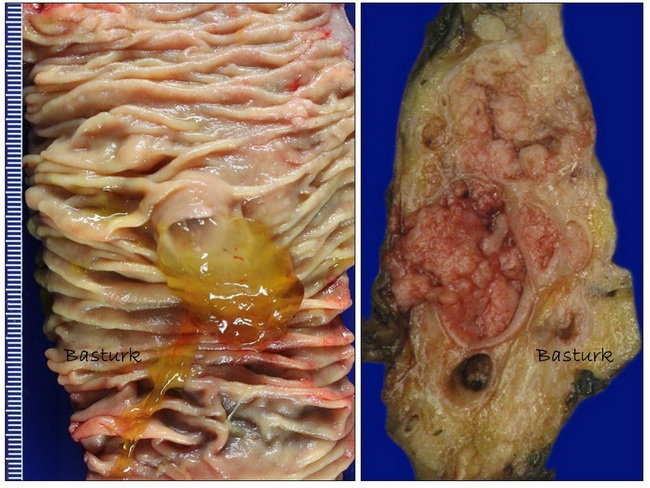IPMN : Gross Pathology


Comments:
Gross Pathology: Intraductal papillary mucinous neoplasms (IPMNs) of pancreas can arise anywhere in the pancreatic duct system. About 40% are multicentric. MAIN DUCT-IPMNs: About 80% of the main duct-IPMNs occur in the head of the pancreas and are usually > 0.5 cm in size. They cause segmental or diffuse dilatation of the main pancreatic duct and produce abundant mucin which may be seen extravasating from the ampulla of Vater into the duodenum (as nicely shown here). The dilated ducts show smooth to papillary to nodular mucosa associated with abundant viscous mucin. BRANCH DUCT-IPMN: They usually involve the uncinate process of the pancreas. They do not communicate with the main pancreatic duct and appear as peripheral, mucin-filled, multilocular cystic lesions within pancreatic parenchyma. Careful gross examination of IPMN is essential in identifying whether or not the cyst communicates with the main pancreatic duct. Main duct-IPMNs are more likely than branch duct-IPMNs to harbor invasive adenocarcinoma (50%-64% of cases vs 18% of cases respectively). IPMNs larger than 3 cm or those with solid or mucinous nodules adjacent to cystically dilated ducts are also more likely to be associated with invasive carcinoma. Image courtesy of: Olca Basturk, MD; used with permission



